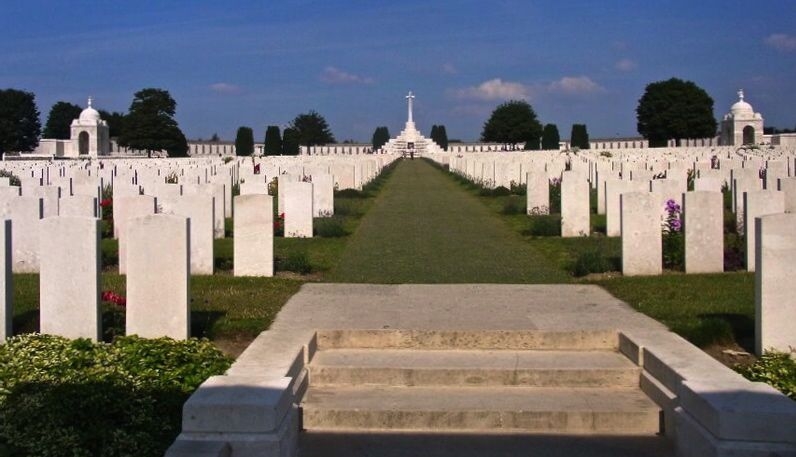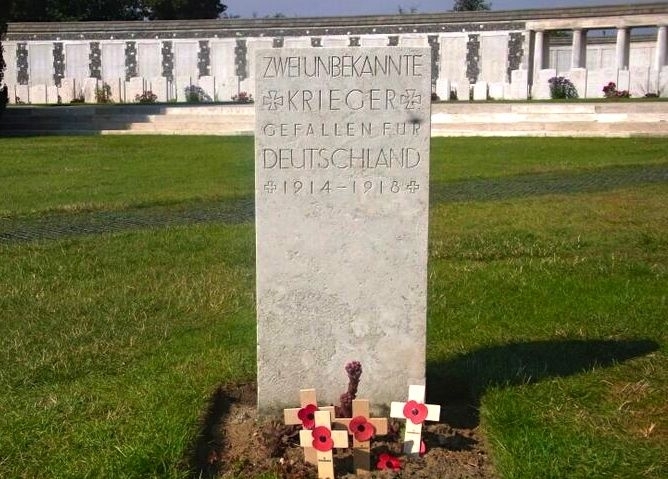British-led forces began an offensive in Flanders on 31 July 1917 that is still mired in controversy.
The Third Battle of Ypres, widely called Passchendaele, or the ‘Battle of the Mud’, has come to epitomise the horrors of the First World War.
The aim, as ever, was to break the deadlock on the Western Front, this time at Ypres where the Allied armies held a bulge in the line known as the salient.
It was coupled with the ambitious objective of striking towards the Belgian coast to deny German U-boats use of bases from where they menaced vital Allied shipping.
But after more than three months of fighting, the battle resulted in an advance of only five miles (eight kilometres), at a cost of more than 500,000 Allied and German troops killed, missing or wounded.
Rain
Furthermore, it was notorious for being fought in appalling conditions, as torrential rain combined with massive shellfire to churn the battlefields into thick mud.
‘Third Ypres’ (it followed the major clashes here in 1914 and 1915) is also known as Passchendaele, after the ruined village captured by Canadian troops at the end of the campaign in November 1917.
The offensive was vigorously promoted by Field Marshal Sir Douglas Haig, the British Commander-in-Chief, who professed the view that the war could be won in Flanders.
Previous Allied operations attempted to break the German lines in France, but by the summer of 1917, the French armies had been weakened by the disaster of the Nivelle Offensive and subsequent unrest.
So the attack was approved despite the misgivings of the Prime Minister, David Lloyd George, about the risk of more mass casualties.

Field Marshal Haig’s statue in Montreuil-sur-Mer, France, his headquarters for the Western Front campaign (Photo: Centenary News)
British, French and Commonwealth troops would all play a part in the fighting that lasted from July-November.
The Germans had to be dislodged from a series of ridges which, although in modest in height, gave them the advantage over the defenders of Ypres on the Flanders plain.
The Third Battle of Ypres was fought in several stages, with the opening assaults in August soon running into the ground in the face of stiff resistance.
The Germans were well-prepared but the challenges were compounded by the heaviest summer rainfall in decades.
The impervious fields of Flanders, their drainage systems shattered by constant bombardment, turned into swamps where men and horses risked drowning in deep, glutinous mud.
Advances
September brought greater progress, with a spell of dry weather and a change of operational commander. Haig replaced Sir Hubert Gough with the more cautious Sir Herbert Plumer, victor of the Battle of Messines in June 1917.
Plumer’s ‘step-by-step’ tactics resulted in the capture of the Gheluvelt plateau in early October.
By now Australian and New Zealand troops had been drafted in to replace earlier British losses.
October saw the return of torrential rain, turning a landscape of blackened tree stumps and flooded shell craters into an even worse quagmire.
Nevertheless, Haig called in Canadian troops to push forward to Passchendaele, despite the concerns of their commander Sir Arthur Currie.
Passchendaele village fell to the Canadians on November 6, and the offensive finally drew to a close on the crest of the ridge four days later. Canadian casualties totalled 16,000 dead, wounded or missing.

Tyne Cot, the largest Commonwealth cemetery in the world, honours the dead of the Third Battle of Ypres. Today (July 31), it is the setting for the UK’s Centenary commemorations in Belgium (Photo: Centenary News)
Argument still swirls around the Third Battle of Ypres/Passchendaele.
Historians debate Haig’s strategy, choice of commanders and motives for pursuing the offensive until November. Questions also linger about the conduct of Prime Minister David Lloyd George.
Talking about Passchendaele earlier this year, Professor Mark Connelly, of the University of Kent, said: “The battle has become one of lasting controversy in British political and military history – who knew what, when, who allowed it to continue.
“In particular, there has been a battle between the memoirs of generals and politicians in the 1920s and 1930s, with the politicians generally saying that the army high command kept them in the dark.”
However, Professor Connelly cautioned: “It’s clear that the British war cabinet did not at any stage decisively rein in what Sir Douglas Haig wanted to achieve.”
“If we want to point fingers of blame at anyone, they’ve all got something to consider about the way operations were conducted.”
 Grave of two unknown German soldiers at Tyne Cot (Photo: Centenary News)
Grave of two unknown German soldiers at Tyne Cot (Photo: Centenary News)
Also in Centenary News:
Tyne Cot centenary service commemorates Passchendaele loss and sacrifice.
‘From Parsonage to Passchendaele’ – Remembering a British nurse under fire in Flanders.
Posted by: CN Editor
Images courtesy of Imperial War Museums © IWM Q 5731 (archive photo); Centenary News (Sir Douglas Haig, Tyne Cot CWGC Cemetery)
